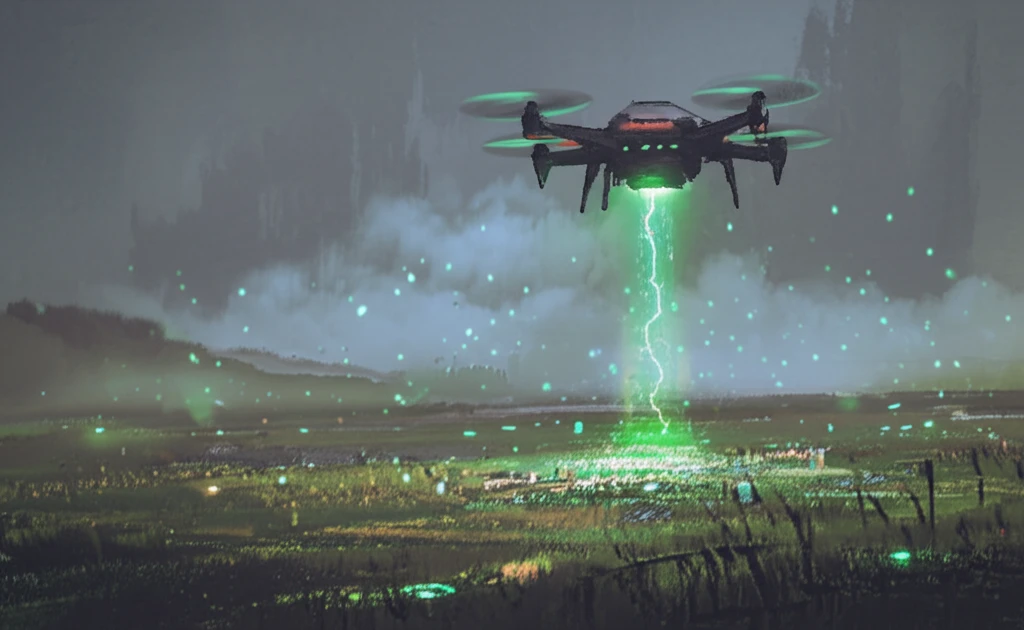
Soaring to New Heights: How Drones and Wireless Power Are Revolutionizing IoT Networks
"Unmanned aerial vehicles are changing the game for Internet of Things connectivity and energy, enhancing everything from smart cities to precision agriculture."
The Internet of Things (IoT) is rapidly transforming our world, connecting devices and systems in ways that promise unprecedented efficiency and convenience. From smart cities optimizing traffic flow to precision agriculture monitoring crop health, IoT's potential is vast. However, a significant challenge lies in powering the remote sensors that form the backbone of these networks. Traditional batteries are often impractical due to their limited lifespan and the high costs and logistical hurdles associated with replacing them, particularly in harsh or inaccessible environments.
Enter the unmanned aerial vehicle (UAV), or drone, equipped with wireless power capabilities. This innovative approach offers a dynamic solution to the energy problem, allowing for on-demand charging of sensors in the field. Instead of relying on fixed power sources or frequent battery replacements, drones can deliver energy wirelessly to IoT devices, extending their operational life and expanding the possibilities for remote monitoring and data collection. This technology also addresses the cost issues of deploying multiple Hybrid Access Points in locations where sensors are sparsely distributed.
Imagine a network of environmental sensors scattered across a vast agricultural landscape, each relaying critical data about soil conditions, temperature, and humidity. With wireless-powered drones, these sensors can operate continuously, providing farmers with real-time insights to optimize irrigation, reduce fertilizer use, and improve crop yields. This is just one example of how UAV-assisted IoT networks are poised to revolutionize various industries.
The Power of Full-Duplex Wireless Charging with Drones

One of the most exciting advancements in this field is the use of full-duplex wireless power transfer. Traditional wireless charging methods require devices to switch between energy harvesting and data transmission, limiting efficiency. Full-duplex systems, however, allow for simultaneous energy transfer and data communication, maximizing the utility of each drone visit. Think of it as a super-efficient refueling and data download all-in-one service for your IoT devices.
- Increased Efficiency: Simultaneous energy transfer and data communication.
- Extended Sensor Lifespan: Regular wireless charging eliminates battery replacement.
- Enhanced Data Collection: Continuous operation leads to more comprehensive data.
- Reduced Operational Costs: Minimizes the need for manual maintenance.
The Future is in the Air
The development of UAV-assisted wireless-powered IoT networks is still in its early stages, but the potential is enormous. As drone technology continues to advance and wireless power transfer becomes more efficient, we can expect to see even more innovative applications emerge. From environmental monitoring and precision agriculture to disaster response and infrastructure inspection, the combination of drones and wireless power is paving the way for a more connected, efficient, and sustainable future. The key will be optimizing these systems for real-world conditions, ensuring reliable and cost-effective operation in diverse environments. The sky's the limit for this technology, and as research continues, we can expect to see it transform industries and improve lives in countless ways.
